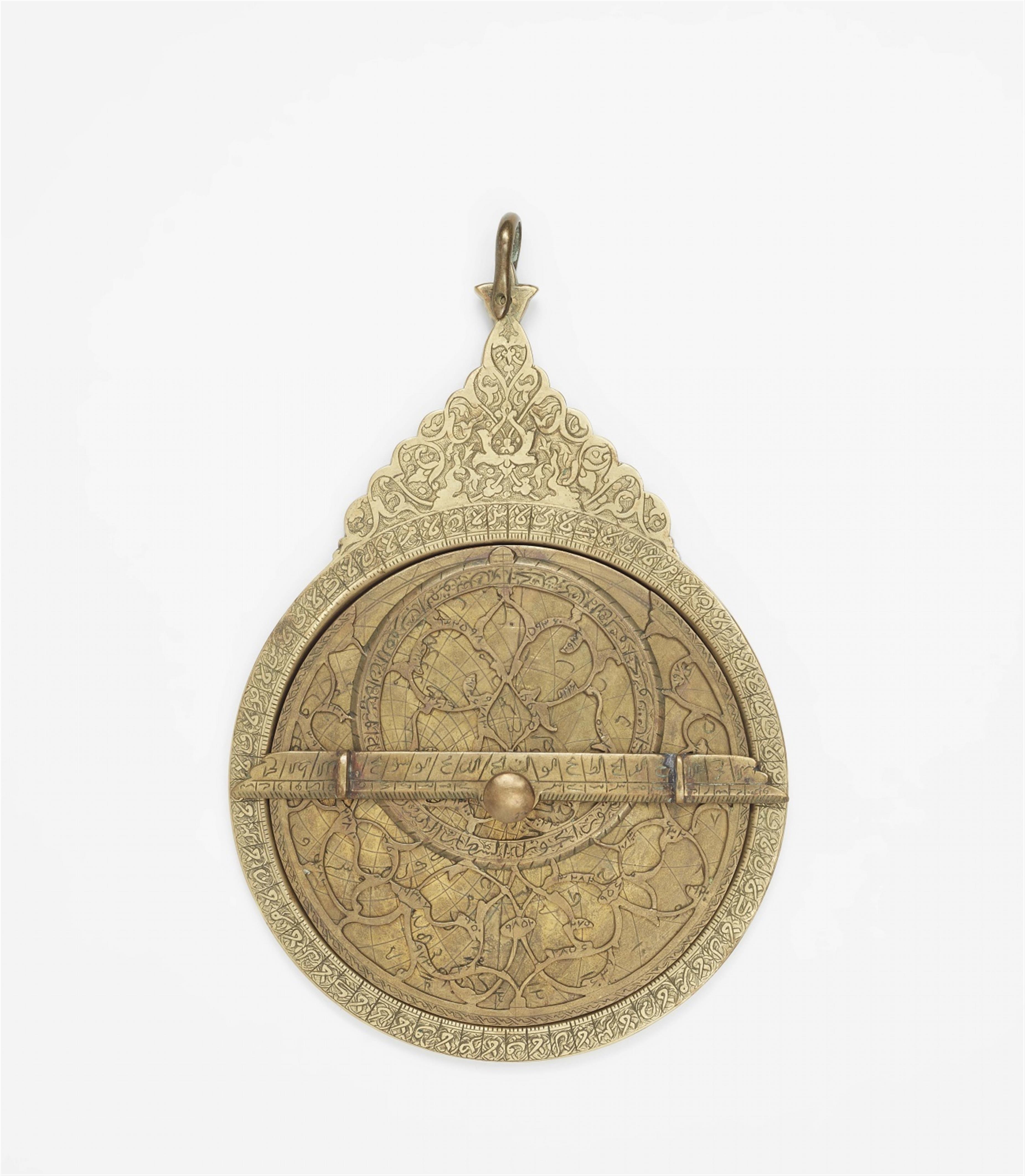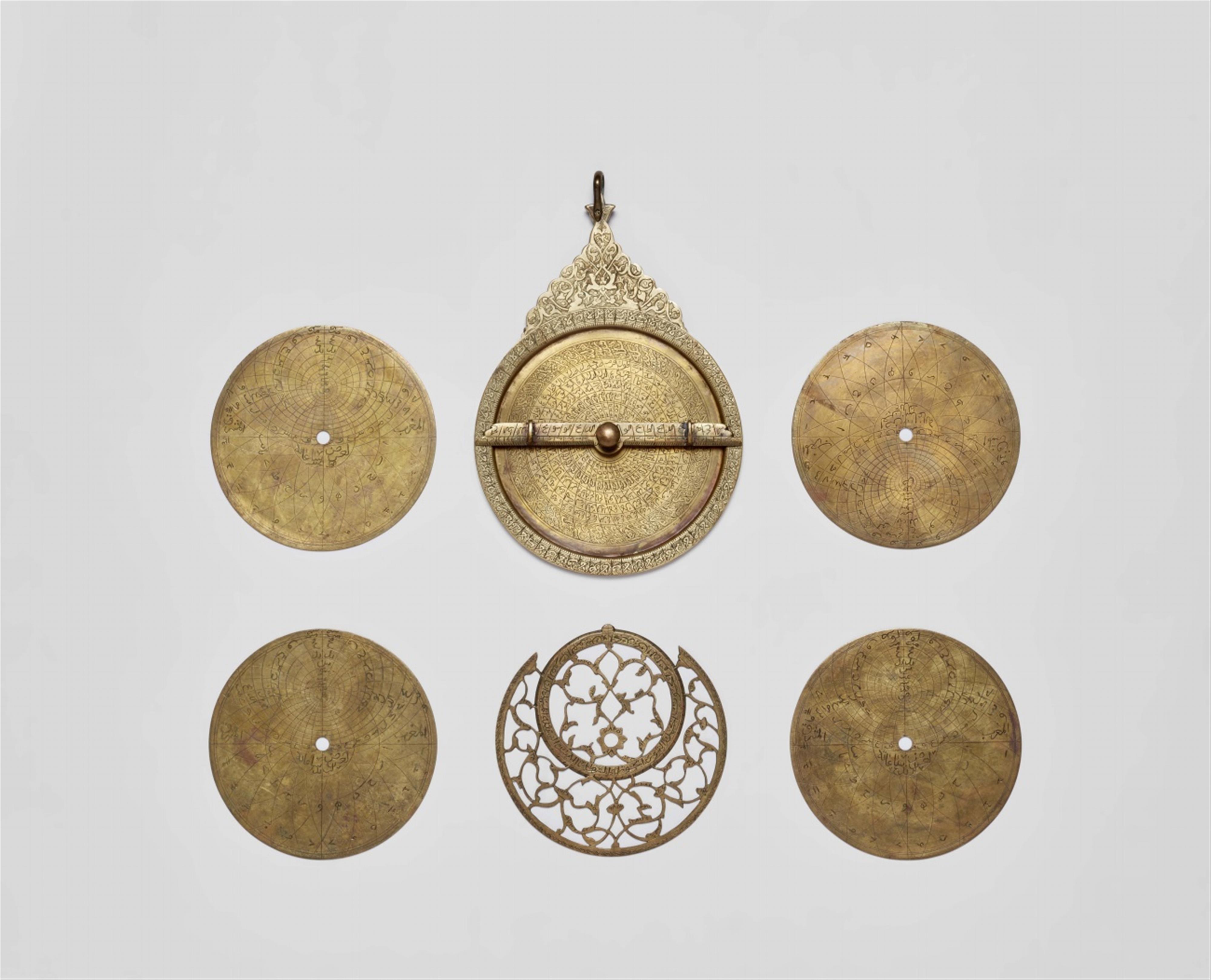A planispheric astrolabe (or universal astrolabe)
Engraved brass astrolabe with four additional tympani and a pierced foliate rete. Unsigned. H 17.6, W 12.3 cm. weight 612 g.
Middle Eastern, 16th - 19th C.
The first text in Arabic devoted to the planispheric astrolabe is traditionally attributed to al-Fazārī (d. 161 AH/AD 777), however the first preserved work devoted to this specific type of astrolabe is by ʿAlī b. ʿĪsà (d. 215 AH/AD 830) and it is entitled: Kitāb al-ʿamal fī-l-asṭurlab (“On the making of the astrolabe”). With the spread of the Arabic-Islamic civilization from Spain to India, this instrument became widely known and a number of treatises were devoted to it. In Europe the astrolabe was known as early as the 11th century in Spain but only later on, that is between the 13th and the 15th centuries, it was widely employed, especially for seafaring. The astrolabe is the instrument most in use and in the Western world it was supplanted only after the invention of the telescope.
In this exemplar the inscriptions are in naskh – an Oriental cursive script
On the mater (i.e. the body of the planispheric astrolabe) are inscribed the names of the major Islamic cities: Mecca, Medina, Ṣanʿāʾ, Cairo (Miṣr), Aleppo (Ḥalab), Baghdād etc.
There are also a set of three other tympani – so the instrument was used by traveller observers.
The throne is raised: the suspensory apparatus consists in a simple shackle attached to a hole.
On the rete the zodiacal signs are inscribed with the standard names (e.g. Pisces: al-ḥūt; Taurus: al-thawr; Virgo: al-sunbula).
We would like to thank Prof. Dr. Arianna D'Ottone Rambach, Istituto Italiano di Studi Orientali, Sapienza - Università di Roma for providing this catalogue text.
Provenance
Family ownership, Hamburg.
From the collection of an engineer for construction machinery, active in Iran and Syria in the 1960s and 1970s.
Literature
"Cf. Syndram, Wissenschaftliche Instrumente und Sonnenuhren, Kunstgewerbesammlung der Stadt Bielefeld Stiftung Huelsman, Munich 1989, no. 5.
Cf. The example in the Germanisches Nationalmuseum Nuremberg:
inv. no. WI120, the early astrolabe of al-Sahl al-Nisaburi.
Inv. no. WI121, a 14th century Italian astrolabe.
Inv. no. WI353, the early astrolabe of Ahmad ibn Muhammad al-Naqqash.
Inv. no. WI354, the astrolabe of Georg Hartmann, Nuremberg 1532.
Cf. also https://www.mhs.ox.ac.uk/astrolabe/catalogue/
S.a. King, The origin of the astrolabe according to the medieval Islamic sources, Institute for the History of Arabic Science, Frankfurt 1981
Cf. also King, Islamic astronomical instruments, London 1987.
Cf. Also King, Islamic astronomy and geography, Ashgate 2012."




